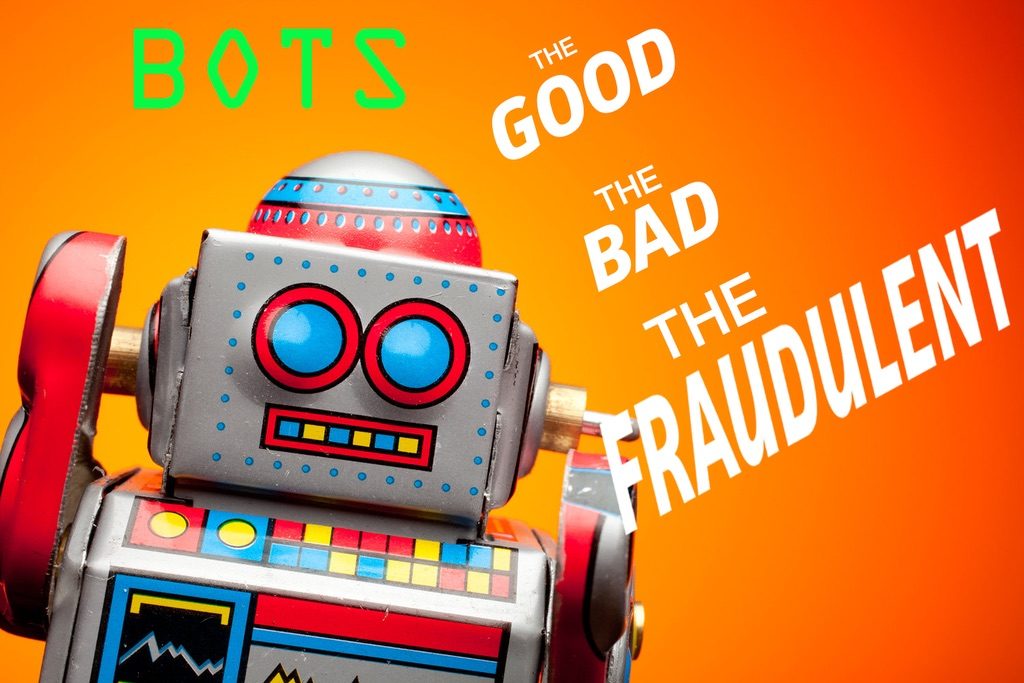Bots are one of the main culprits of click fraud. Whether it stems from your competitor or not, they can seriously drain your advertising budget.
Commonly referred to as “bots”, “click bots”, “internet bot”, “web robot” or “WWW robot”, are designed to perform automated tasks over the internet.
Did you know?
According to security firm Imperva’s latest report, over half of all web traffic is composed of bots across 17 billion websites over 100,000 domains. Bot traffic now dominates human traffic on the internet.
Datalicious conducted a study that concluded $68 million of marketing budgets are wasted on fraudulent site visitors and there was $48 million of fraudulent ad impressions.
But there are both good bots and bad bots, a tale as old as time.
But WHO Are These Bots?
Bots are programs/software that is automated to perform a certain automated task over the internet.
Typically these bots come from far away lands. Countries with lower socioeconomic levels that foster such activity.
Let’s Start With The Good News – Good Bots
There are bots whose automated tasks are designed for good not evil.
The list includes search engine spiders and automated chat bots for customers service. Don’t be scared, both social media giants Facebook and Twitter use bots for things like refreshing your newsfeed. AOL Messenger and MSN messenger have been using bots for years.
So whenever you see or hear internet bots don’t be quick to assume it’s bad.
And Then There Were The Bad Bots…
Bad bots, bad bots, whatcha gonna do, whatcha gonna do when they come for you?
The best thing you can do when it comes to bots is to be aware and keep yourself protected from their malicious activity.
From a click fraud perspective, bots can commit malicious acts like clicking on advertisements to drain your paid search advertising budget and create fake accounts that provide an artificial social media engagement experience.
94% of websites have experienced a bot attack.
The list of bad bots includes:
- Spambots for email addresses
- Classic viruses and worms
- DDoS attacks
- Botnets, zombie computers, etc
- Website scrapers use content from websites without permission
- Used to drive up ticket prices
- Hence why you have to click the “I am not a robot” box when purchasing things online
- Spice things up negatively on an online forum…who knows what they’ll say!
- Bot farms manipulate positions, affect reviews
- CLICK FRAUD
A Closer Look: Methbots
A prime example of how bots can truly hurt your business. Just last year, a group of Russian criminals made millions off of advertising campaigns by clicking on video ads.
They were extremely meticulous in the execution of their plan by creating over 6,000 domains with over a quarter of a million different URLs, including some pretty big names. These fraudulent domains were able to fool algorithms that dictated where the most profitable ads would go in order to make sure their spaces were bought over name brands.
From there they focused on a bot farm to generate fake traffic to these ads to drain PPC budgets. These meth-bots perfectly exemplify how bad bots can be so harmful to your paid online advertising strategy.
Things to Remember
Bots are everywhere.
Bots are “awake” all the time.
They do not rely on sleep like the human folk and work when we are not.
The motives behind bad bots vary, but money is usually a huge driving factor.
But remember, not all bots are created equal.
It is important to be aware of the impact bots can have especially when it comes to click fraud.
